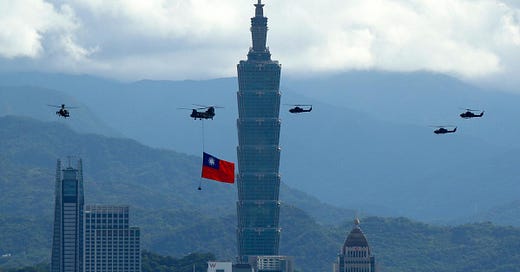Bulletin From The Borderlands is a joint project between Lethal Minds and some of the most talented OSINT analysts and independent journalists working today. Our goal is to provide you with a clear, accurate, and informative view of the world, free from censorship or bias. The Bulletin will bring you the facts, our analysis, and our evidence. We hope you find our work helps you better understand the complicated and increasingly volatile world in which we live.
This is the second part of our series by our staff writer Sino Talk, outlining a potential Chinese invasion of Taiwan. We hope this provides you some perspective on what a PRC campaign against Taiwan would look like.
Be informed, be prepared, be lethal.
This Special Report is brought you to by fieldseats.com
Fieldseats.com is an e-commerce, federally licensed firearms dealer that provides virtual reviews on brand new firearms. At the end of the review they give away the firearm being reviewed to an attendee!
Each item reviewed is given away for free as a part of their promotion for purchasing what they call a “Field Review.” Currently, they’ve got Field Reviews up ranging from $20 for a brand new Smith & Wesson M&P Shield 2.0 to $65 for a new IWI Galil ACE GEN II. Each review is limited to around 38 people, so your chances of winning the giveaway is that much higher!
Use code “LETHALMINDS” to receive 10% off your entire purchase at fieldseats.com! Check out fieldseats.com to purchase your Field Reviews and enter to win the firearm or item being reviewed and use code “LETHALMINDS” to get 10% off your order.
Be sure to also check out their Instagram and Twitter @field_seats
Taiwan Invasion Part II : Command and Control
In 2013, The Chinese Communist Party (CCP) announced several reforms that changed several key aspects of the People’s Liberation Army (PLA) for two reasons. The first reason was to increase the CCP’s control over the PLA and to combat the rampant corruption within its ranks. The second reason is to improve the PLA’s ability to ‘fight and win wars.’ Several of these reforms focused on increasing the PLA’s Command and Control (C2) capabilities to conduct joint operations. These reforms ranged from creating new commands to increased emphasis on education on joint operations. While the PLA undertook reforms that enhanced its C2 capabilities for joint operations, there are several issues will likely prevent it from utilizing the new capabilities to its fullest extent.
PLA Reforms and Their Importance
The 2016 reforms modernized the command structure of the PLA in several significant ways. One of the most substantial changes was the creation of separate chains of command into administrative and operational chains (CMC-TC headquarters-operational and CMC-service headquarters-operational units). The rationale behind separating the chains of commands was to meet the requirements of various scenarios – such as an invasion of Taiwan – faster and more efficiently than the previous combined chain of command. Additionally, the previous structure required a change from an administrative to an operational command structure in respond to crises. Another reason for the creation of two separate Joint Operations Command Centers whose aim was the unification of peacetime structure and wartime structure 平战一体. The separation was also based on the policy that the CMC performs general management and administration, the theaters conduct operations, and the services are charged with force building.
Another significant change was the creation of five Theater Commands (TCs) from the seven Military Regions (MRs). These TCs were tasked with creating a joint command structure, called a joint operations command system that will be used during both peacetime and conflicts. Furthermore, the TC commanders were entrusted with more power and greater C2 than the previous MRs. One of the main functions of the TCs is to be in charge of operations and is the only top joint operations command in their respective area of operations. This emphasis on joint operational C2 is in contrast to the previous MRs, which were largely dominated by ground forces that were focused on peacetime administration. The result of moving to TCs is to strengthen jointness within the PLA by making joint operations and training its main focus.
The reform of the PLA command structures sought to incorporate both the Integrated Joint Operations (IJO) 一体化联合作战and All-Domain Operations (ADO) 全域作战 concepts into the command structures. IJO is the new joint operations doctrine that will form the basis for how the PLA will conduct joint operations. The PLA textbook Science of Campaigns 战役学 defines IJO as the following:
Operations “using integrated methods and information technology, blending an operational system from all services and arms and other types of armed strengths with operational units to form an integrated whole.”
The TCs will rely on IJO to integrate nearly all PLA forces under its command since they will need to have the ability to successfully command the each service during peace and wartime.
Keep reading with a 7-day free trial
Subscribe to Lethal Minds to keep reading this post and get 7 days of free access to the full post archives.





